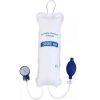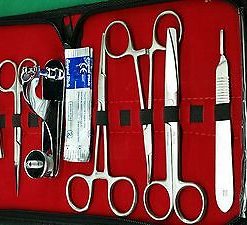VMMC Disposable Circumcision set
R221.99 Ex VAT
Voluntary Medical Male Circumcision (VMMC) Health Care Waste Management (HCWM) Toolkit
Developed to assist programme implementers with the waste management challenges associated with VMMC programs, this toolkit contains guidance on the development of a waste management system to support VMMC services, standard operating procedures on waste disposal, and training tools for waste handlers and transporters. Based on South African National Standards, International Practice, and the SCMS Health Care Waste Management Model, this comprehensive set of tools provides guidance on building HCWM operational infrastructure, improves staff capacity, and aids stakeholders in managing the waste generated by VMMC campaigns. It is included in the PEPFAR guide to practices for VMMC site operations.
Circumcision kits come in various types, each designed to facilitate the procedure in different settings and for different age groups. Here are the main types of circumcision kits and their uses:
1. Gomco Clamp Kit
- Use: Commonly used in newborn circumcisions.
- Description: The Gomco clamp consists of a metal bell that fits over the glans and a clamping mechanism that applies pressure to the foreskin to prevent bleeding while it is cut away.
- Advantages: Reduces bleeding effectively; widely used and accepted.
- Disadvantages: Requires precision and experience to use correctly.
2. Plastibell Kit
- Use: Primarily used for newborns and infants.
- Description: The Plastibell device is a plastic ring that is placed under the foreskin and tied with a suture to cause the foreskin to fall off naturally within a few days.
- Advantages: Simple to use; minimizes bleeding; no sutures required.
- Disadvantages: Risk of ring displacement or infection if not monitored properly.
3. Mogen Clamp Kit
- Use: Suitable for both infants and adults.
- Description: The Mogen clamp is a metal device that clamps the foreskin, allowing it to be cut off quickly.
- Advantages: Quick procedure; minimal bleeding.
- Disadvantages: Does not provide a view of the glans during the procedure, posing a risk of accidental injury.
4. Shang Ring Kit
- Use: Typically used for adults and adolescents.
- Description: The Shang Ring is a circular device composed of two plastic rings that clamp the foreskin, which is then removed after a week or so.
- Advantages: Minimally invasive; minimal bleeding; quick recovery.
- Disadvantages: Requires follow-up for ring removal; discomfort during the wearing period.




















